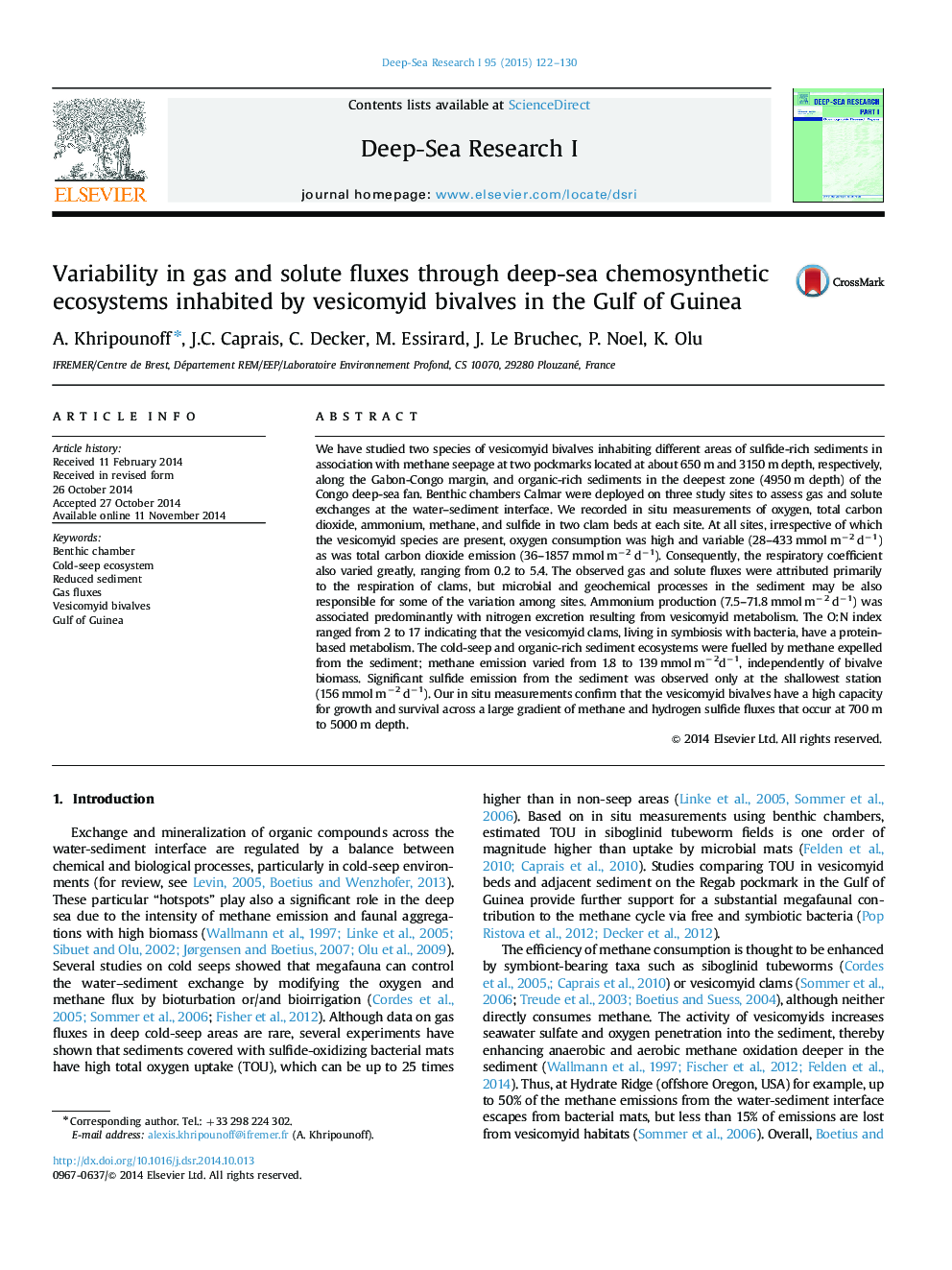| کد مقاله | کد نشریه | سال انتشار | مقاله انگلیسی | نسخه تمام متن |
|---|---|---|---|---|
| 6383581 | 1626335 | 2015 | 9 صفحه PDF | دانلود رایگان |
- Vesicomyid clams inhabit methane-rich sediments in the deep Gulf of Guinea.
- Benthic chambers were deployed to assess the gas and solute exchanges of sediment.
- Total oxygen consumption by the sediment was mostly attributed to the clam respiration.
- The cold-seep and organic-rich sediment ecosystems were fuelled by methane.
- Vesicomyid clams have a high capacity for living along a large gradient of methane.
We have studied two species of vesicomyid bivalves inhabiting different areas of sulfide-rich sediments in association with methane seepage at two pockmarks located at about 650 m and 3150 m depth, respectively, along the Gabon-Congo margin, and organic-rich sediments in the deepest zone (4950 m depth) of the Congo deep-sea fan. Benthic chambers Calmar were deployed on three study sites to assess gas and solute exchanges at the water-sediment interface. We recorded in situ measurements of oxygen, total carbon dioxide, ammonium, methane, and sulfide in two clam beds at each site. At all sites, irrespective of which the vesicomyid species are present, oxygen consumption was high and variable (28-433 mmol mâ2 dâ1) as was total carbon dioxide emission (36-1857 mmol mâ2 dâ1). Consequently, the respiratory coefficient also varied greatly, ranging from 0.2 to 5.4. The observed gas and solute fluxes were attributed primarily to the respiration of clams, but microbial and geochemical processes in the sediment may be also responsible for some of the variation among sites. Ammonium production (7.5-71.8 mmol mâ2 dâ1) was associated predominantly with nitrogen excretion resulting from vesicomyid metabolism. The O:N index ranged from 2 to 17 indicating that the vesicomyid clams, living in symbiosis with bacteria, have a protein-based metabolism. The cold-seep and organic-rich sediment ecosystems were fuelled by methane expelled from the sediment; methane emission varied from 1.8 to 139 mmol mâ2dâ1, independently of bivalve biomass. Significant sulfide emission from the sediment was observed only at the shallowest station (156 mmol mâ2 dâ1). Our in situ measurements confirm that the vesicomyid bivalves have a high capacity for growth and survival across a large gradient of methane and hydrogen sulfide fluxes that occur at 700 m to 5000 m depth.
Journal: Deep Sea Research Part I: Oceanographic Research Papers - Volume 95, January 2015, Pages 122-130
